1
Introductions 2023 was presented at Root Division, San Francisco in August/September 2023 as part of the 2nd Saturday Exhibition Series.
2
EXHIBITION DATES :
August 10–September 16, 2023
JURORS :
Naz Cuguoglu
Assistant Curator of Contemporary Art & Programs, Asian Art Museum
Jonathan Carver Moore Founding Director & Gallery Owner, Jonathan Carver Moore
PJ Policarpio
Associate Director, Micki Meng
EXHIBITING ARTISTS :
Nibha Akireddy
Annie Artell
Dominique Birdsong
Lynse A. Cooper
Carolina Cuevas
Maya Fuji
Cynthia Yadira Gonzalez
Shao-Feng Hsu
Nahyun Kim
Namita Paul
Callan Porter-Romero
Yunfei Ren
3
4
MICHELLE MANSOUR Executive Director, Root Division
Introductions has been a core part of Root Division’s annual Exhibitions programming since 2007. Conceived as an opportunity to bridge a gap left when the San Francisco Arts Dealer Association (SFADA) discontinued their 30-year summer programming of the same name, Introductions has become a mainstay of our roster. This show highlights talent in the Bay Area and creates connections for artists with commercial galleries and beyond.
Root Division acts as a nexus for the production and presentation of visual art. Our goal is to serve as a connector between artists, the larger art community, and the general public. We offer an entry point for artists as they develop and hone their professional practice. Especially as the art community has faced an exodus of artists moving outside San Francisco and to other cities in search of a more sustainable life AND with the reverberation of the hit to the city’s most financially unstable populations due to the COVID-19 pandemic, Root Division is holding course in its position as an anchor for artists to remain in the Bay Area. Celebrating 21 years of supporting artists and our eighth year in our 13,000 square foot facility, Root Division continues to be a beacon for the visual arts in our city, especially amidst so much challenge and uncertainty.
Introductions begins each year as an open call to any Bay Area artist whose work is not currently represented by a local gallery. Reviewed by a committee of three arts professionals representing a diversity of commercial, non-profit, and educational venues, the exposure for any submitting artist is invaluable. Each year we are encouraged and impressed by the quality of submissions, and we are surprised by the number of outstanding artists still operating under the radar of commercial representation. Our intent is to capture both the aesthetic and conceptual magic that comes from cultivating this new crop of budding talent.
This year our jurors—Naz Cuguoğlu, Jonathan Carver Moore, and PJ Policarpio—selected 12 artists through intensive review. In these pages, you will find an essay by Frances Fleetwood (Root Division’s Art Programs Manager) contextualizing the work of each artist and bringing the works into conversation with one another as well as within a larger discourse of art practice. Root Division is happy to provide an opportunity for these artists to add to the conversation of contemporary Bay Area art, especially in asserting that the San Francisco art community has a unique voice. We are proud to debut this group of artists and to support their continued artistic and professional development.
5
Foreword
From The Jurors
NAZ CUGUO G LU Assistant Curator of Contemporary Art & Programs, Asian Art Museum
Where is home? The artists selected in this presentation are thinking about this question in one way or another. Following the echoes of the ancestral homeland with open ears, they are searching for vocabularies of hybridity, negotiating fragments of identity, and exposing vulnerabilities. They are doing this at all costs, day by day, minute by minute. With such strength and tenderness. And they are doing this without performing it for the white gaze, not delivering that fetishized pain imposed on hybrid identities. No tokenism in the form of diversity language here, no lip service. Rather they are building communities, threading unthreadable, telling speculative and mythological stories, and pushing their own mediums to the limits.
In this tainted city with increasing economic and racial inequalities, these artists are making home for themselves and their communities with care and radical relationality. I feel lucky to be in such good company with my fellow jurors to share these practices with you. Finally, it is important to acknowledge and celebrate Root Division and its generous staff for all that they do for the community by creating and holding sustainable spaces and platforms. Cheers to more allyships and camaraderie in the art world!
6
6

7
Detail image of:
Annie Artell, Exhibitionist, 2022
Glazed ceramic 34 x 36 x 19 in.
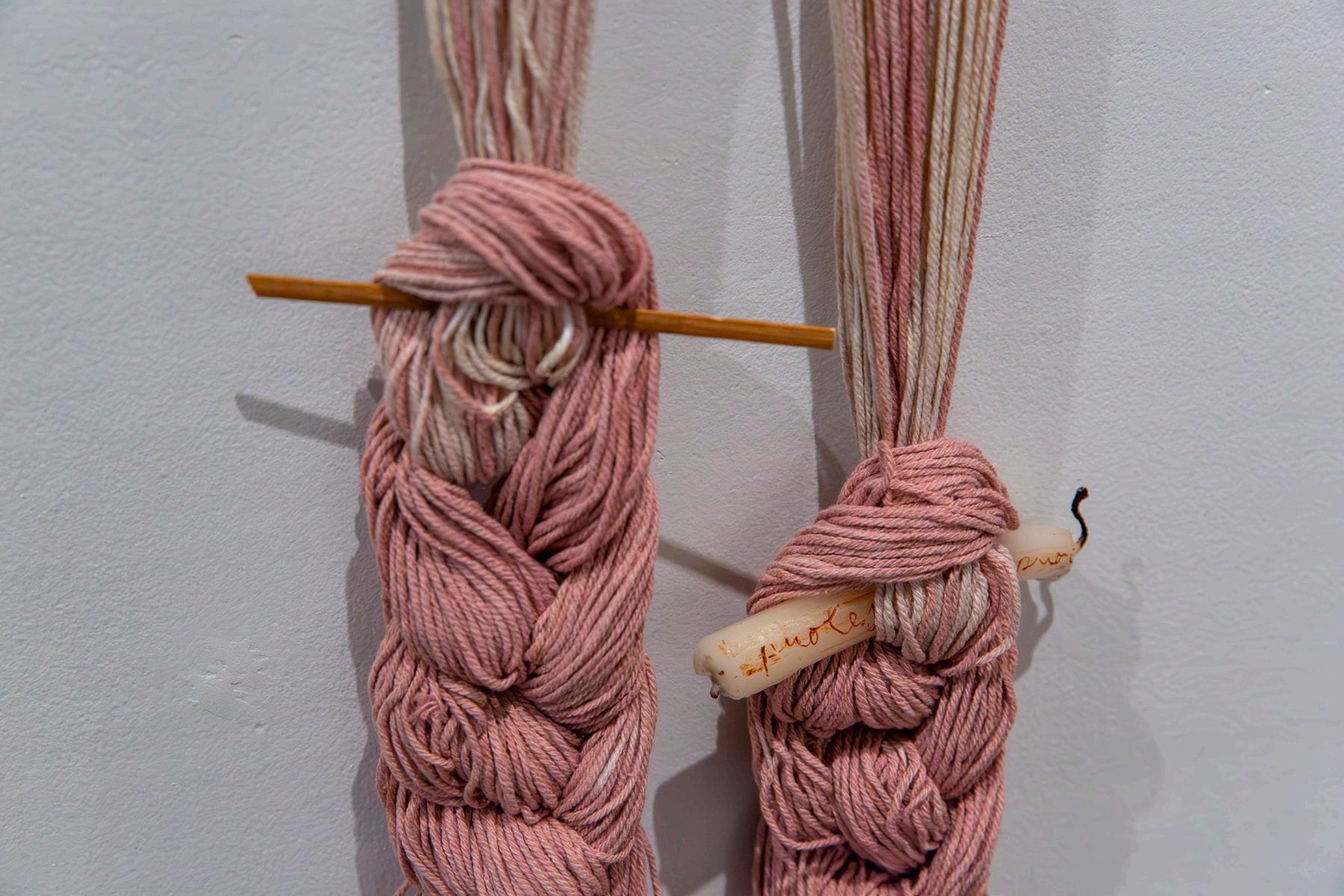
8
Detail image of:
Carolina Cuevas, Mezcla con Tierra, 2023 Clay, fibers, found objects 127 x 24 in.
From The Jurors
JONATHAN CARVER MOORE
Founding Director and Gallery Owner, Jonathan Carver Moore
As a juror of Root Division’s Introductions 2023 exhibition I continue to be in awe of the artistic talent of creatives here in the Bay Area. Arts organizations like Root Division continue to lead the charge in helping foster and develop artists’ visions by giving them the opportunity to present and exhibit their work. As important as it is for artists to create, it is just as important for us, the public, to be able to view and see the work.
Art tackles present societal happenings, urges us to reflect on past events and it helps us envision the future. In a pool of such great talent within Northern California, Introductions is the perfect opportunity for the novice or avid collector to become acquainted with these 12 very gifted emerging artists. Thank you, Root Division for being such an integral part of the Bay Area arts ecosystem and giving these artists the necessary space to exhibit as a part of Introductions 2023
PJ POLICARPIO
Associate
Director, Micki Meng
Introductions 2023 makes a strong case for the continued legacy of the iconoclastic, unruly, freewheeling spirit of the Bay Area, showcasing artists whose work reflect a dynamic sense of experimentation in materials and processes, and a deep commitment to craft and the handmade with exciting works in ceramics, textiles, and found objects. Now imbued with the artist’s strong unassailable sense of self, social consciousness, and the precarity of space, the artworks in this exhibition reflect and confront the quality of our everyday life. This new generation of Bay Area artists brings to fore not just the rich and multifaceted creative practice of the region but also the most urgent questions of our time. Are you listening?
9
9
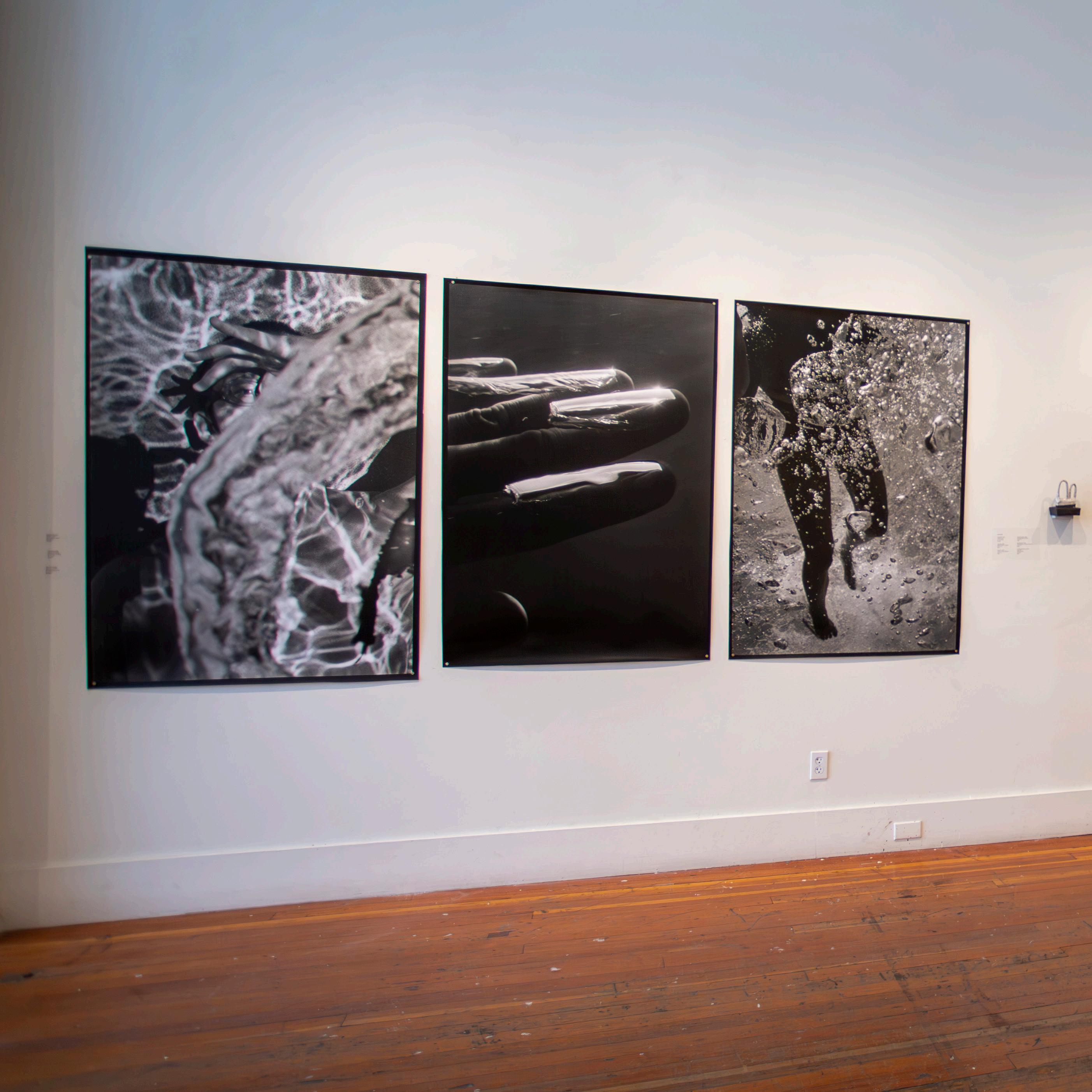
Installation view
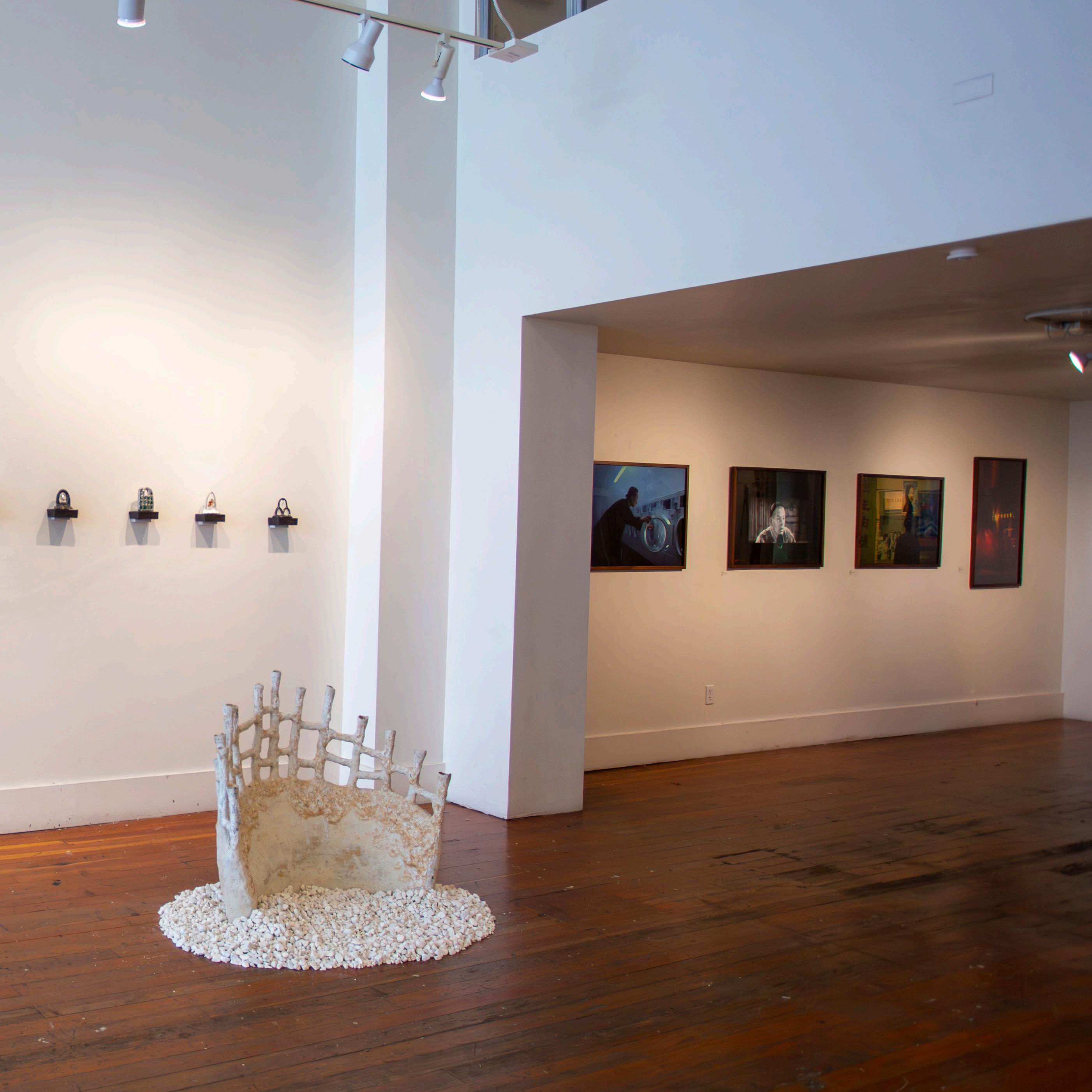
Architectures of Memory
FRANCES FLEETWOOD
Art Programs Manager, Root Division
Introductions 2023 features twelve emerging Bay Area artists without gallery representation, who also share aesthetic and conceptual concerns. Using photography, painting, textiles, ceramics, and mixed media, these artists use figurative or abstract portraiture to explore their identity and culture. Each artist may have a slightly different purpose for this exploration, whether it is to make sense of the past, to search for belonging, to reflect on the duality of their identity, to process loss, or reflect on memories, lineage, or history. Yet all artists piece together a story about themselves and their place in the world, using art as a unique and personal language.
Four red mirrored sculptural works from Dominique Birdsong’s Consequences of Consciousness series open the exhibition. The first and largest work in the series features a monumental portrait of the artist’s face set against a mirrored backdrop, enclosed in a thick stuffed frame with distorted tufted text in white yarn. We are invited to observe our own reflection while engaging intimately with Birdsong’s self-portrait, forging a link between us and the artist. The distorted texts read “A Flame in Darkness”, “Shattered and Feeble”, “Dipped in Sorrow”, “Drained and Hollow” respectively. A rare invitation into the inner world of a private artist, this series grapples with complex emotions including anger, pain, loss, and the grief that comes from an absent mother. While exploring these difficult emotions, Birdsong provides a cushion for the pain with her use of soft materials like yarn, fabric, and stuffing.
In conversation with Birdsong’s mirrored installation, Taiwanese artist Shao-Feng Hsu’s meditative black and white photographic installation explores the artist’s connection to water. Water reflects and refracts light as it is captured in motion, and the artist grapples with the physical and emotional experience of being submerged. Hsu’s oeuvre has retained a commitment to exploring this topic throughout his entire career as his fixation with water began at an early age. His recent works have evolved to poetic and creative techniques of engaging with water to capture different interactions with it; his Night
12
Swimming breath photograms are captured underwater during a new moon, in his closest attempt to translate the stillness and quiet of being underwater into a photograph. Hsu’s works can be read as abstract self-portraits as he documents himself in the liminal space water provides.
Contrasting to Hsu’s large-scale mural prints, Annie Artell’s architectural installation features a series of small ceramic sculptures installed on clay shelving. Framing a larger throne-like ceramic work on the floor that evokes the shape and texture of coral, the artist blends symbols, poetic writings, and abstract forms to create a unique visual language. Artell’s recent work is inspired by the archaeological concept of Disjecta Membra, the process of reassembling an object by piecing together broken fragments to create a whole. The term stems from the Egyptian myth of Osiris, the murdered King whose body is pieced back together by his wife, the Goddess Iris. Similarly, Artell brings separate sculptural components together to create a unified installation; in doing so, the artist contextualizes her personal experiences and explores the healing power of ritual practices following trauma.
Inspired by the unearthing of an old family photograph, Namita Paul’s architectural series explores memories of the house where she was born. By recreating features from the house such as bricks and doorways, Paul reflects on the refuge it provided her family after their displacement during the partition of India and Pakistan. Though the artist cannot visit the house as it is no longer in the family, it remains present through fragments of memories, sounds, smells, and sensations. Drawing on her familial lineage, Paul uses techniques of garment construction in the creation of these works, using canvas as the base and gold thread to create the architectural elements. Adjacent to two stretched canvas works, Manifest remains unstretched, hanging from a shelf attached to the wall and revealing a series of hand-written prayers visible on the back. Portraying a solid brick wall with loose hanging fabric, the work is a reminder that memories can be at once solid and malleable.
Lynse A. Cooper’s site-specific photographic installation also captures memories of architectural spaces–this time her grandparents’ house. Documenting objects and environments in different stages, Cooper explores change and loss over time. Her grandfather’s bedroom is featured in three different stages; its shift and deterioration representing his illness and eventual death. A photograph of an orange tree in her grandparents’ backyard is exhibited alongside photographs of bottled home-made orange juice, a bag of the discarded juiced fruits, and a sculpture containing the desiccated peels in gel wax. With images of a bedroom, couch, and backyard devoid of any people, Cooper explores loss and isolation. The only photograph featuring any people is of the artist’s family carrying a casket. Cooper utilizes ethereal documentary style photographs to memorialize people and places important to her, exploring themes of family, death, memory, and Black American domestic life.
Installed in Root Division’s media space, Yunfei Ren’s cinematic photographs also evoke feelings of isolation, featuring self-portraits of the artist alone, sometimes with his back to the camera. Using self-portraiture to reflect on the history and experience of the Chinese diaspora, Ren’s staged scenes recount past and present discrimination and prejudice against the Asian immigrant community. Exploring his identity as a queer Chinese artist from Wuhan who moved to San Francisco on the cusp of the pandemic, Ren’s photographs communicate loss, alienation, and the search for belonging.
Also utilizing self-portraiture to explore her identity, Nibha Akireddy’s installation features two large-scale oil paintings reflecting on the artist’s culture and upbringing. In Self Portrait, after “But You Cain’t Use My Phone” by Erykah Badu, Akireddy inserts herself into a recreation of Badu’s album cover, which appropriated South Asian imagery to represent the singer with multiple arms. Used in Hindu imagery, the many-armed figure symbolizes the immense power of the deity, emphasizing their ability to perform several feats at the same time. In Akireddy’s rendition, the artist is portrayed engaging with
13
multiple forms of modern and dated technology including phones, a discman, a cd, headphones, and speakers. Reclaiming the use of “exotic” imagery that was popular in hip-hop at the time, Akireddy explores her own identity as a Silicon Valley-raised and educated engineering student who moved to San Francisco to work in tech. Now at the start of her art career, she explores her relationship to the industry that brought her here, whilst also exploring sexuality, shame, colonialism, and diasporic artist solidarity.
In juxtaposition to Akireddy’s works, Carolina Cuevas abstracts natural materials to reflect on lineage and culture. With a combination of clay, fibers, found objects, and indigo dyes, the artist weaves together each component to create a representation of family, culture, and language. Using unfired clay, Cuevas’ works serve as transient physical representations of oral traditions, highlighting impermanence and change as they explore the tension of relationships between people, bodies, and materials. Through the labor of weaving together braids of fiber, Cuevas represents time in a material sense. While many of Cuevas’ works call to mind the braiding of hair, touched, brushed, braided references it explicitly by reflecting upon the Promesa made from the artist’s father to her mother. As described by the artist, “Promesas, meaning promises, are a sacrifice a person makes to a saint or God to achieve a miracle. Promesas are usually done for extended periods of time; the more time, the more likely it is the miracle will occur, and the more you demonstrate your love for that person.” Her father’s promesa was to grow his hair until her mother had recovered from illness. Every day for six years, Cuevas’ mother touched, brushed, and braided his hair; the lengthening braid became a living altar, a tangible sign of his commitment.
Installed between Cuevas’ installations are the dream-like paintings of Korean-American artist Nahyun Kim, whose immigration to the US at the start of her teenage years provided her with connection to both cultures. Inspired by the power of women, fellow diasporic Korean kin, and her mother, Kim paints images and scenes that come to her
in dreams. This includes On the Mountainside, which represents the artist and her mother against a mountain backdrop under moonlight, both facing the viewer with their hair braided together to show their interconnectedness. Kim’s mother has been a key supporter of her development as an artist, always encouraging her to pursue her own dreams and to find freedom in making her own choices. Using symbolism and metaphors–including water as a theme for change, fluidity, and transitions–Kim explores the cyclical journey of her own transformation.
Maya Fuji similarly explores the “both/and” of maintaining connection to two cultures. A Japanese-American artist, Fuji’s colorful acrylic and oil airbrush paintings reference the Japanese historic use of the term ‘half’ to describe people of mixed Japanese descent. Fuji contributes to the growing oppositional call to use the term ‘double’ instead. This body of work of the same name incorporates this dualism of having two cultures and two histories intertwined. Imagining many parallel possible lives existing alongside one another that diverge when different choices are made, Fuji plays with different possible connections to both Japanese and American cultures. The artist layers fiction and daydream to blend the parallel existence of fantasy and reality. Her nude figures act as antidotes to the artist’s own experiences of “otherness” or “foreignness”, showing characters engaging with cultural objects and activities from both Japanese and local Bay Area culture.
Matching Fuji’s palette of blue, green, and pink, Mexican-American artist Cynthia Yadira Gonzalez’ multimedia installation uses childlike imagery and playfulness to explore darker adult themes. Three bright tactile pedestals support a selection of Frankensteined ceramic monsters, incorporating hybrid abject objects such as globular many-fingered hands and floating ice-cream cone shaped heads. Featured on the wall behind are more monsters, reminiscent of soft sculpture creepy crawlies. Straddling the line between reality and the inner world of thought, Gonzalez transports themself back to the
14
child-like state of play to access memories that simultaneously want to be acknowledged and forgotten, but that were crucial to forming the present. Using lowbrow materials and challenging the needless gendering of craft, they use clay, wood, polymers, and fibers to convey the distortion of memories and imagination into nightmares.

Callan Porter-Romero’s multimedia paintings also incorporate hands, though in a very different way. Growing up in Oakland in a Black, Japanese, and Mexican household, Porter-Romero gained a unique perspective into the weight of labor and invisible hardships that are disproportionately carried by Black and Brown people. The artist centers hands engaging in various activities to represent this anonymous labor. Porter-Romero often creates 3-dimensional components within her paintings; in Reprieve in the face of return, the artist carves hands out of discarded cardboard to place emphasis on the disconnection to labor and expendable materials in Western society. It was a blue sky somewhere else portrays the internment of the artist’s Japanese side of the family in the 1940s. A cropped image of a floral print dress and hand holding a suitcase lean forward towards the edge of the frame, conveying movement and urgency, while a paper name tag replicates those that were given to the artist’s family at the time of their imprisonment. The hand holding the suitcase evokes the aesthetic of a wood carving; wood represents strength and durability, and was significant as one of the only materials available at the internment camps that people could use to create art.
Themes of loss and vulnerability weave throughout this exhibition, and yet a strength is woven by the artists’ collective exploration. Solidarity forms a forcefield, creating a safe container for these introspections.
Installation detail of:
Cynthia Yadira Gonzalez, The In-Between, 2023
Mixed media installation
Size variable
15
Nibha Akireddy
Self Portrait, after “But You Cain’t Use My Phone” by Erykah Badu, 2023 Oil paint
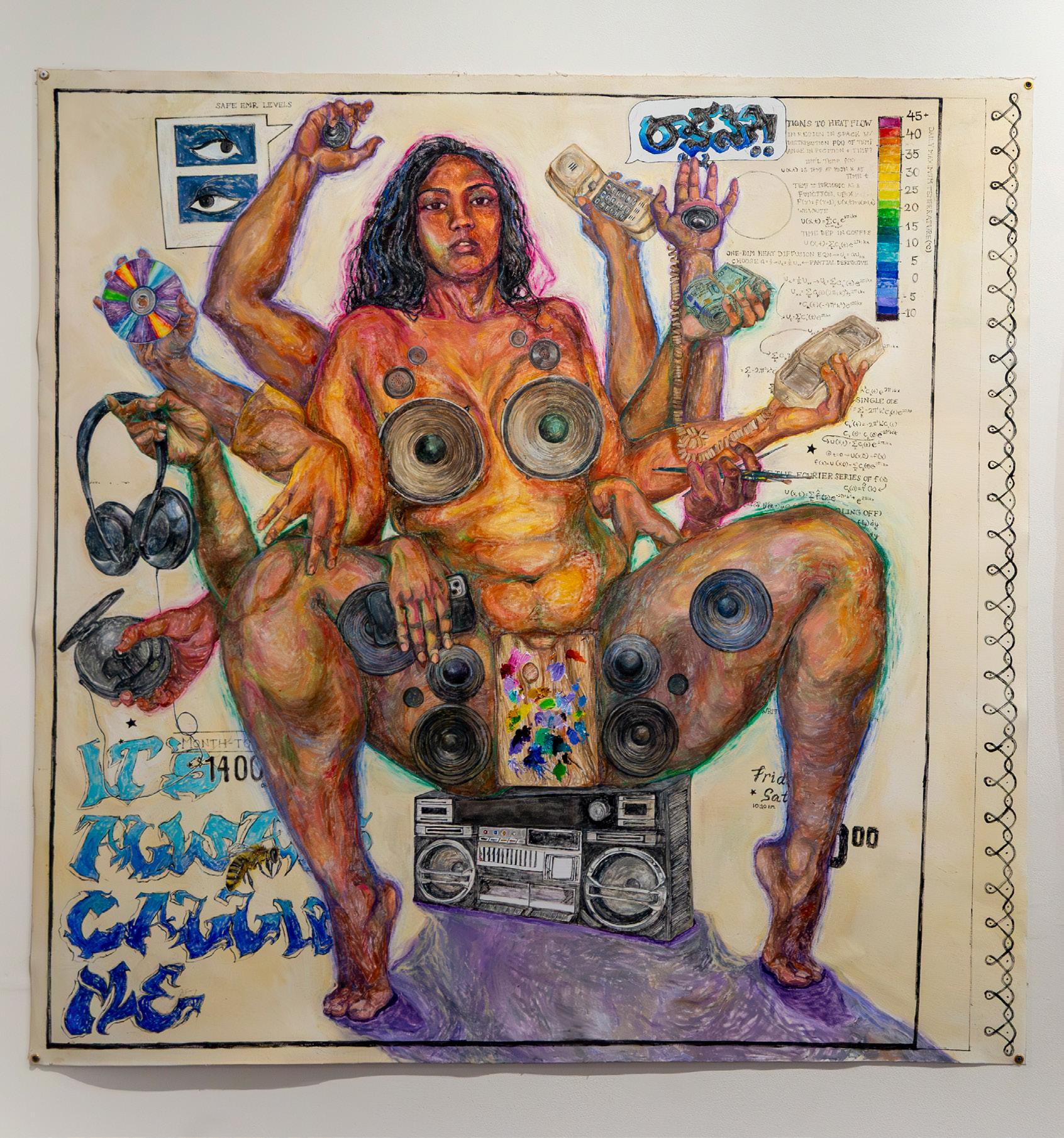
16
55 x 55 in.
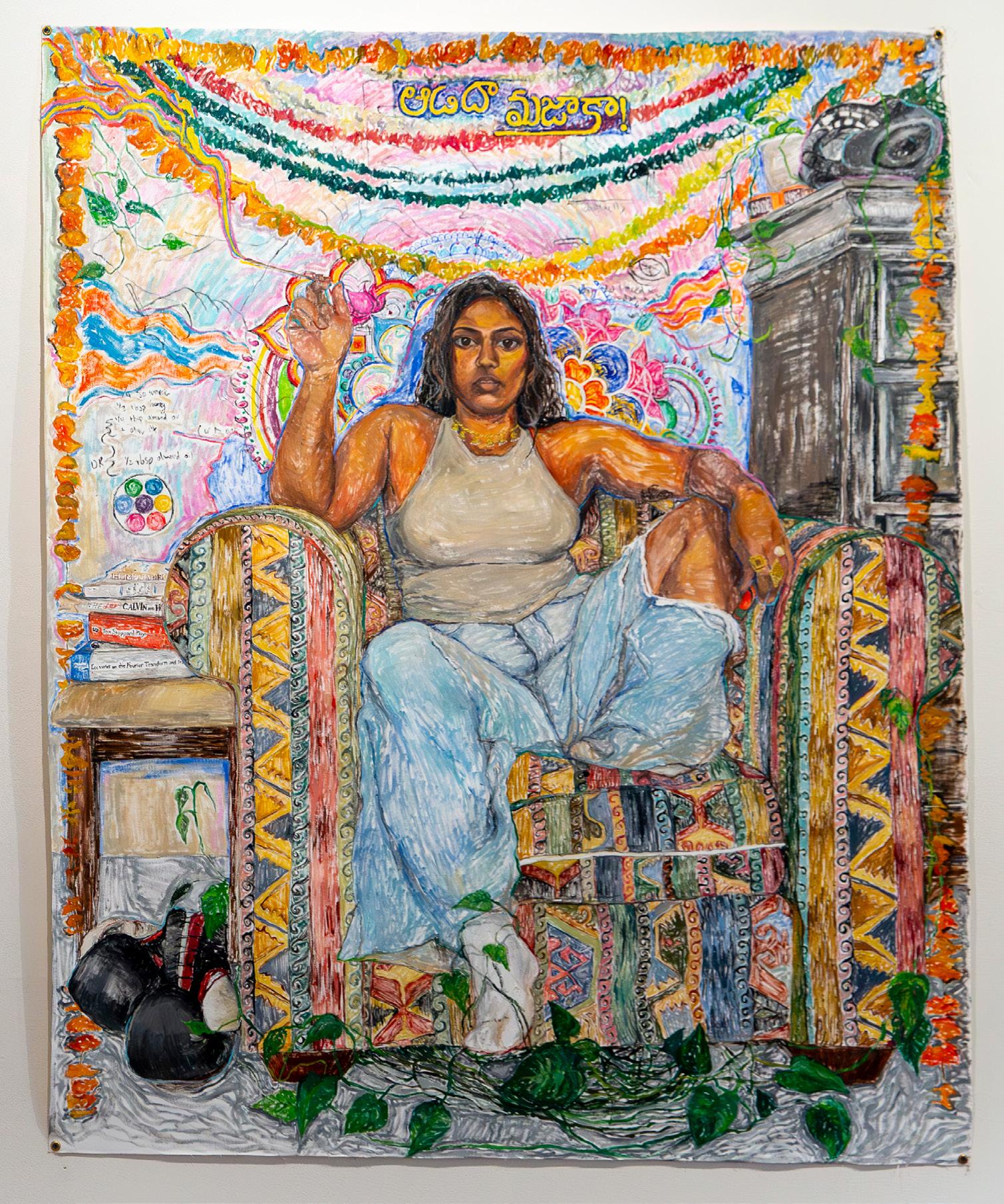
17
Aadada Majaaka! (ఆడదా మజాకా!), 2023
Oil paint 60 x 48 in.

18
Front:
Exhibitionist, 2022
Glazed ceramic
34 x 36 x 19 in.
Back row, from left to right:
Two dudes sitting on a log after a swim, 2023
Glazed ceramics
3 x 3 x 1 in.
Eye of the Storm, 2023
Glazed ceramics, cast glass, aluminum

3 x 3 x 1 in.
Emerald City Ruins, 2023
Glazed ceramics, aluminum
3 x 3 x 1 in.
(Detail, bottom right)
Ring of Fire, 2023
Glazed ceramics, aluminum
3 x 3 x 1 in.
(Detail, top right)
Angel Tears, 2023
Glazed ceramics, cast glass
3 x 3 x 1 in.

Annie Artell
19
From left to right, top to bottom:
The Consequences of Consciousness (A Flame in Darkness), 2023 Oil on wood, monks cloth, yarn, resin
62 x 48 x 7 in.
The Consequences of Consciousness (Shattered and Feeble), 2023 Resin, acrylic mirror and oil 36 x 32 x 6 in.
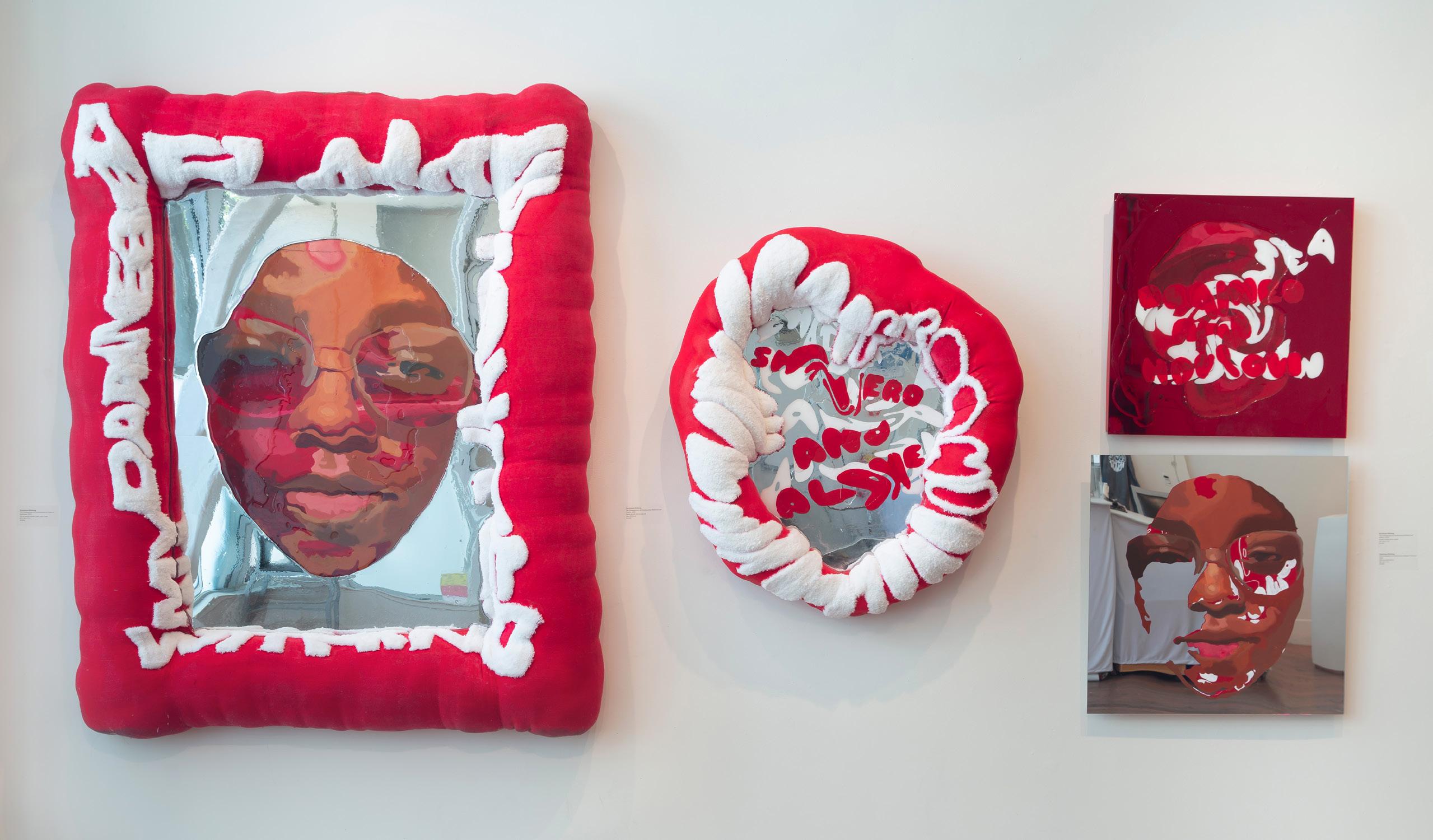
The Consequences of Consciousness (Drained and Hollow), 2023 Acrylic mirror, oil on wood 24 x 24 x 1 in.
The Consequences of Consciousness (Dipped in Sorrow), 2023 Oil on acrylic mirror 26 x 26 x 1 in.
20
Dominique Birdsong
Installation detail

21
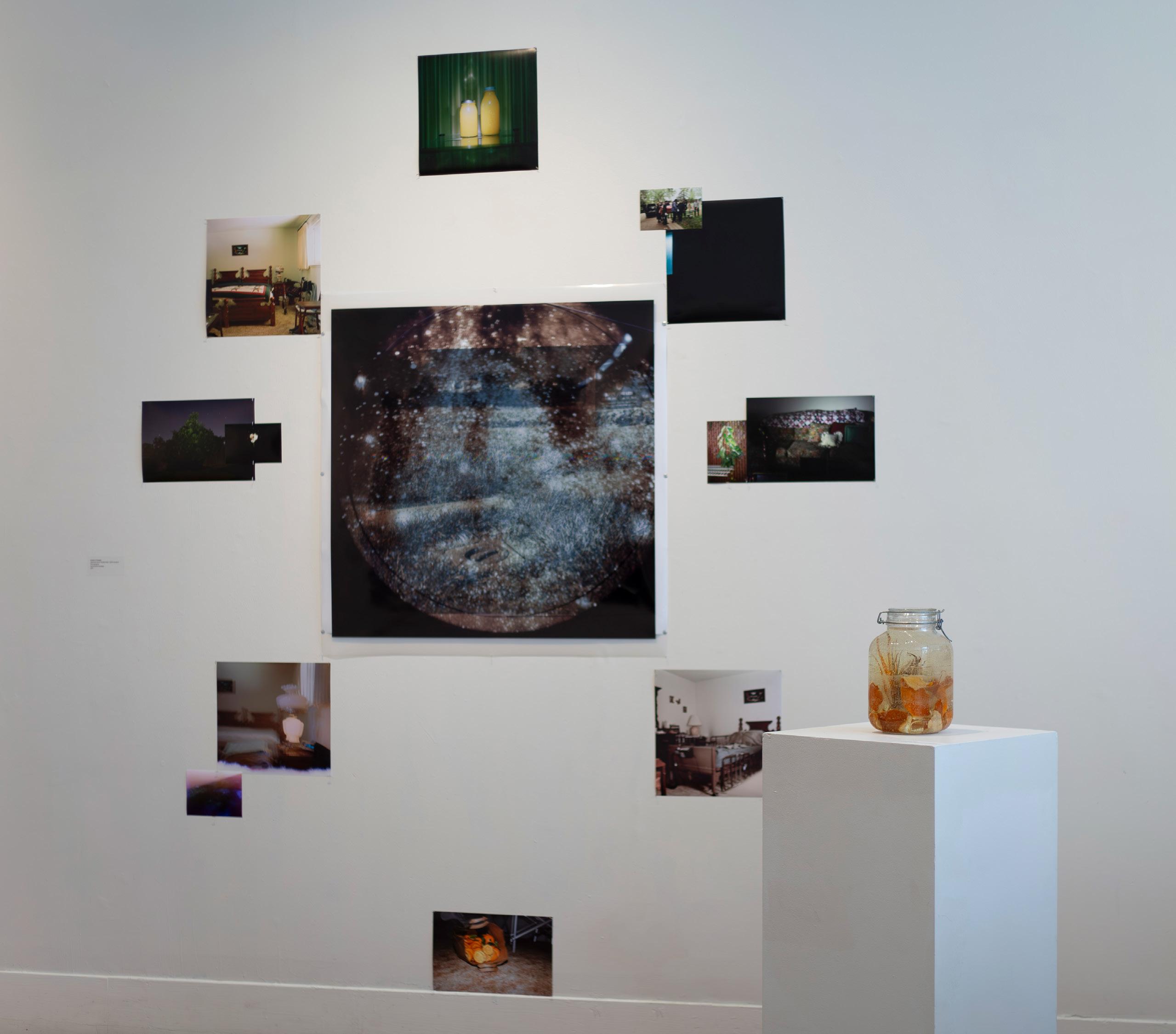
22
Installation:
Selections from “Myrtle Vista”, 2021–present
Photography
Dimensions variable (Detail, right)
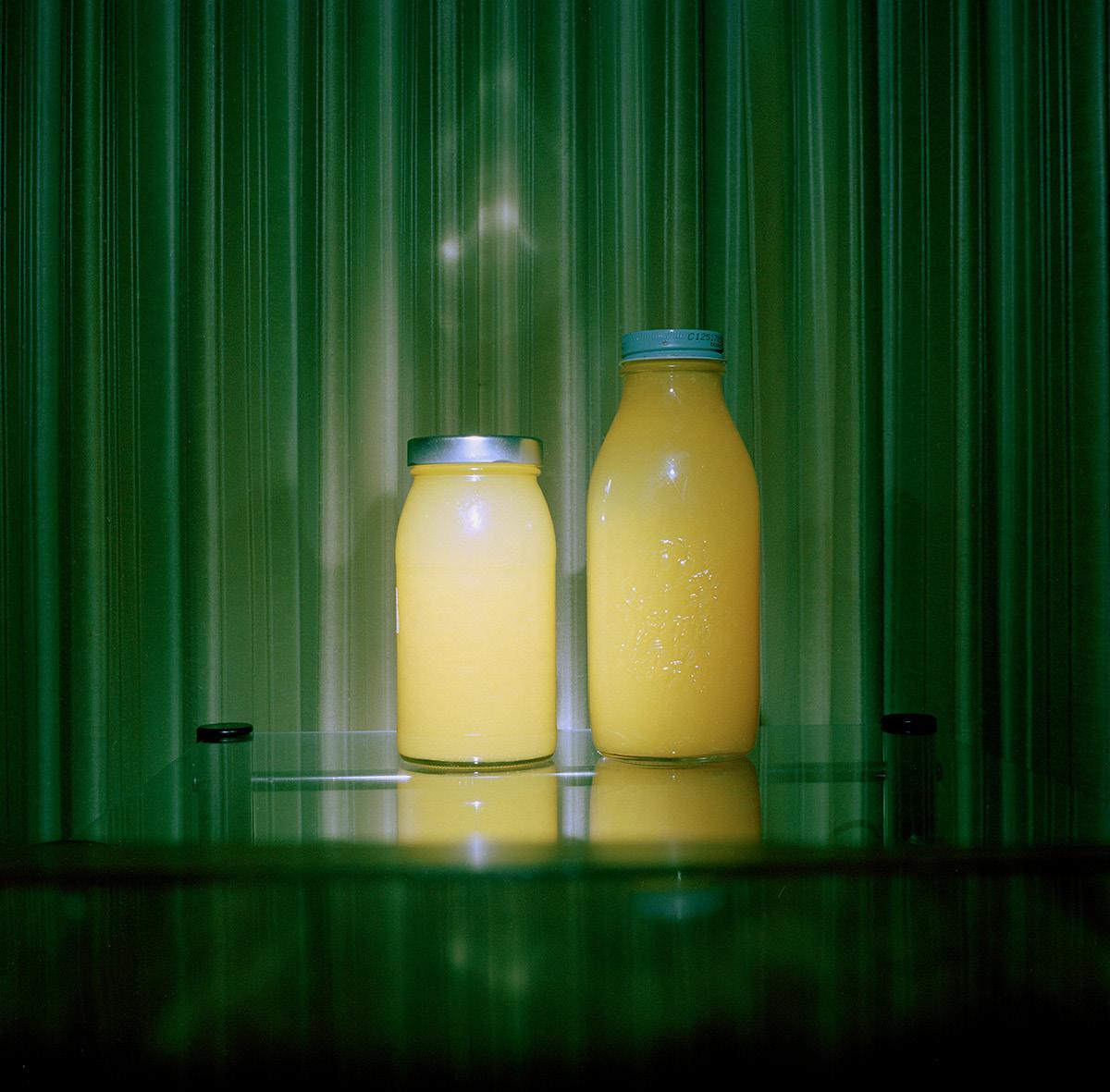
Sculpture:
Embalment, 2023
Hand-washed found glass jar, gel wax, dried birds-of-paradise flower, dried citrus peels, acrylic sealant, artist’s broken bloodstone, essential oil 10 x 5 x 5 in.
Lynse A. Cooper
23
From left to right:
touched, brushed, and braided, 2023 Clay, fibers, indigo 96 x 24 in.
Mezcla con Aire, 2023 Clay, fibers, found objects 144 x 27 in.

Carolina Cuevas


25
Maya Fuji

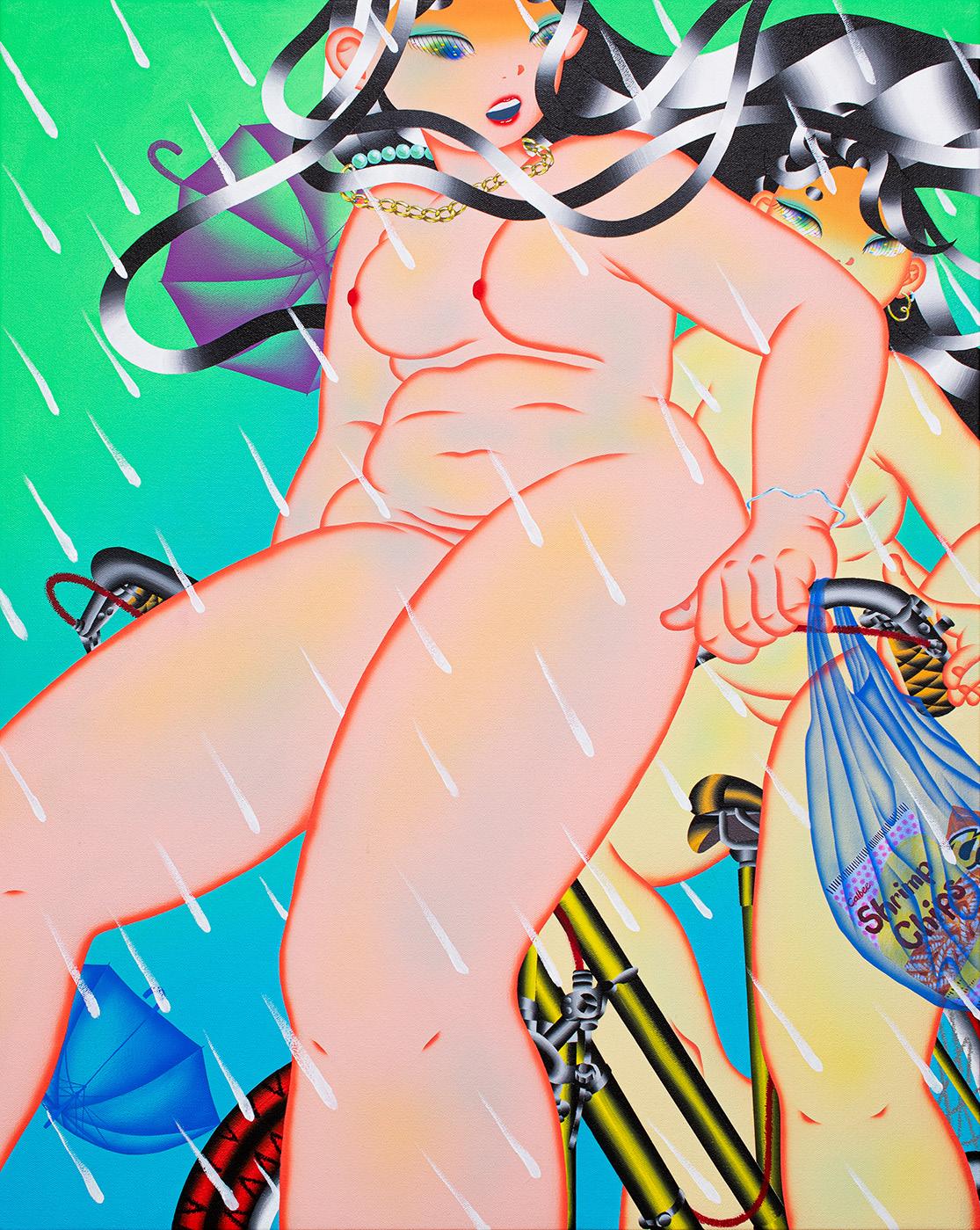
Americans Don’t Use Umbrellas アメリカ人は傘をささない, 2023
Unsaid 見てみぬふり
26
Acrylic and oil pastel on canvas
30 x 24 x 2 in.
What’s Left
, 2023
Acrylic and oil pastel on canvas 30 x 24 x 2 in.
A Word That Doesn’t Exist

27
存在しない言葉, 2023 Acrylic, oil pastel, charcoal and rhinestone on canvas 20 x 16 x 2 in.
The In-Between, 2023 Mixed media installation Size variable

Cynthia Yadira Gonzalez

29
Shao-Feng Hsu
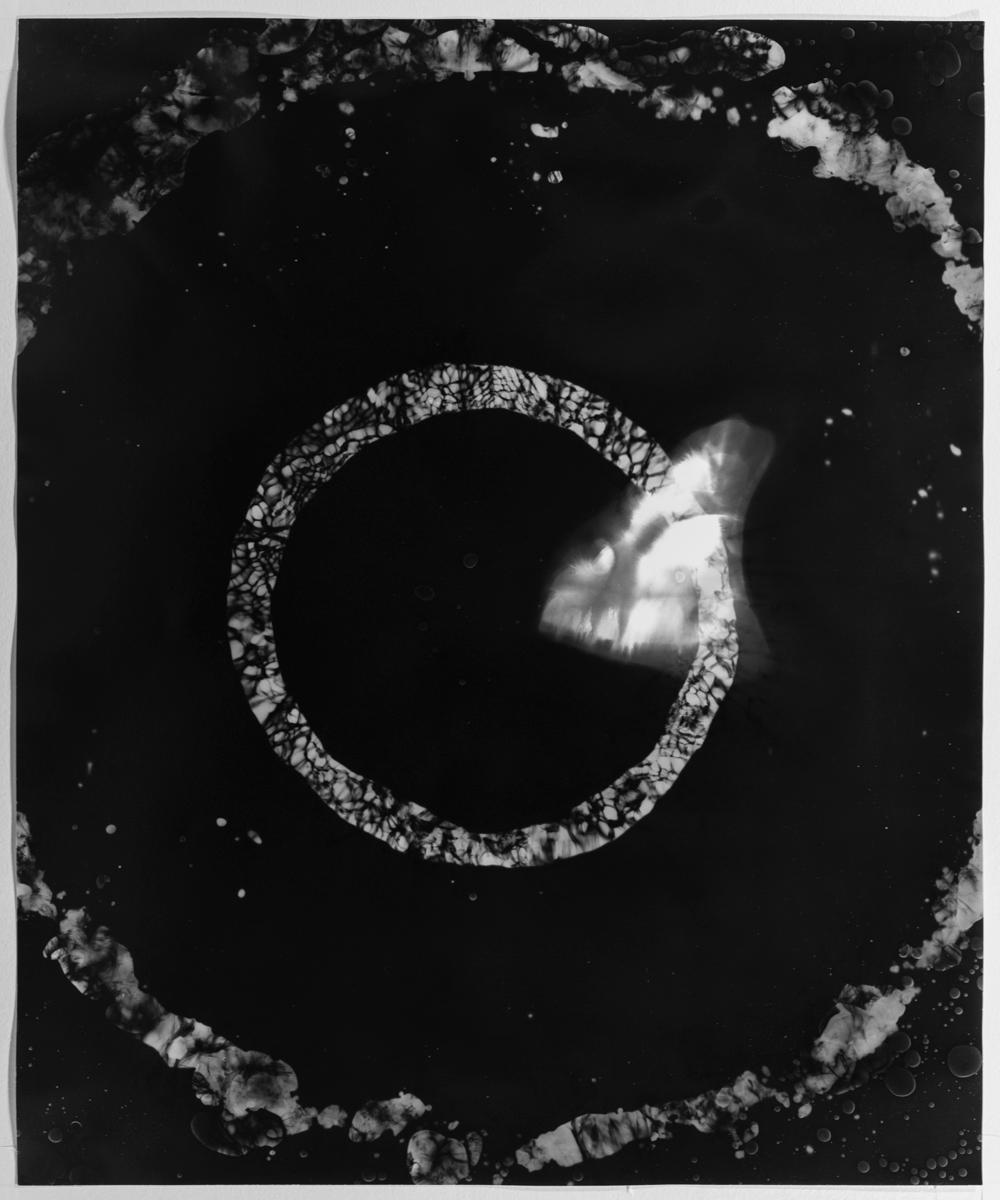
30
Night Swimming (2022100309), 2022
Unique silver gelatin print 25 x 21 in.
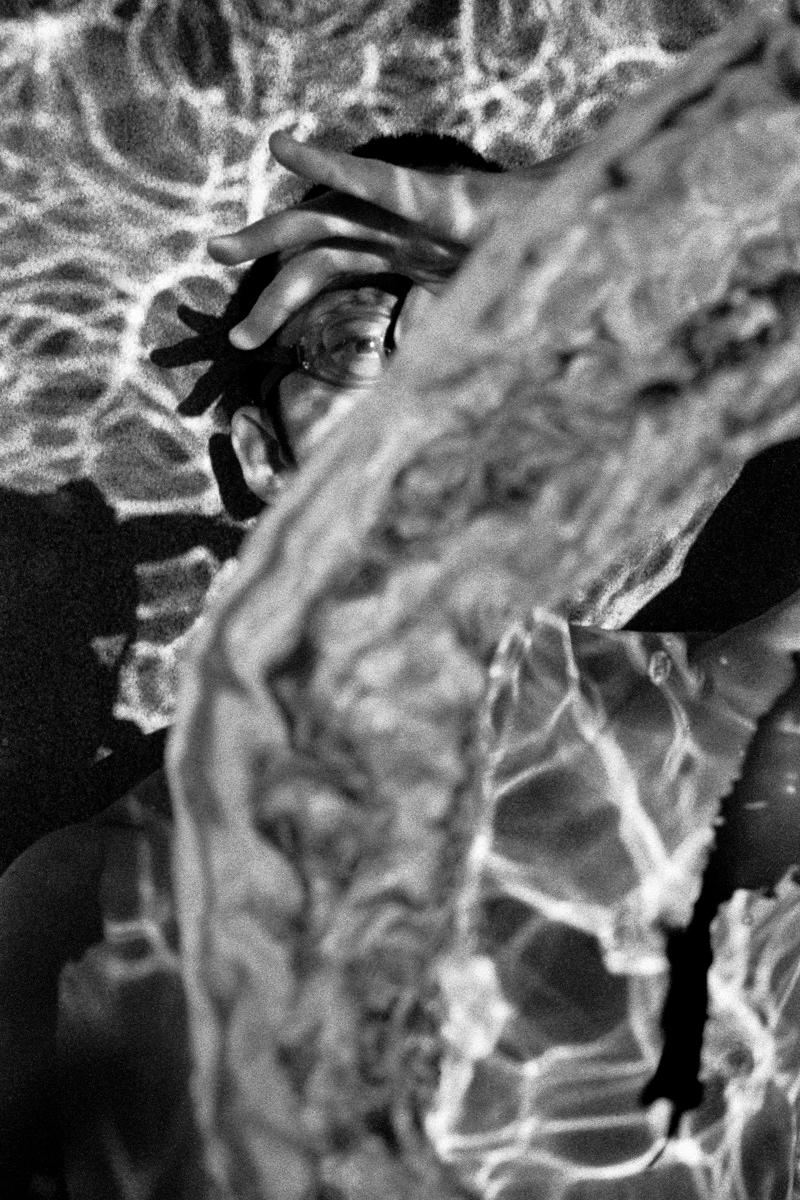

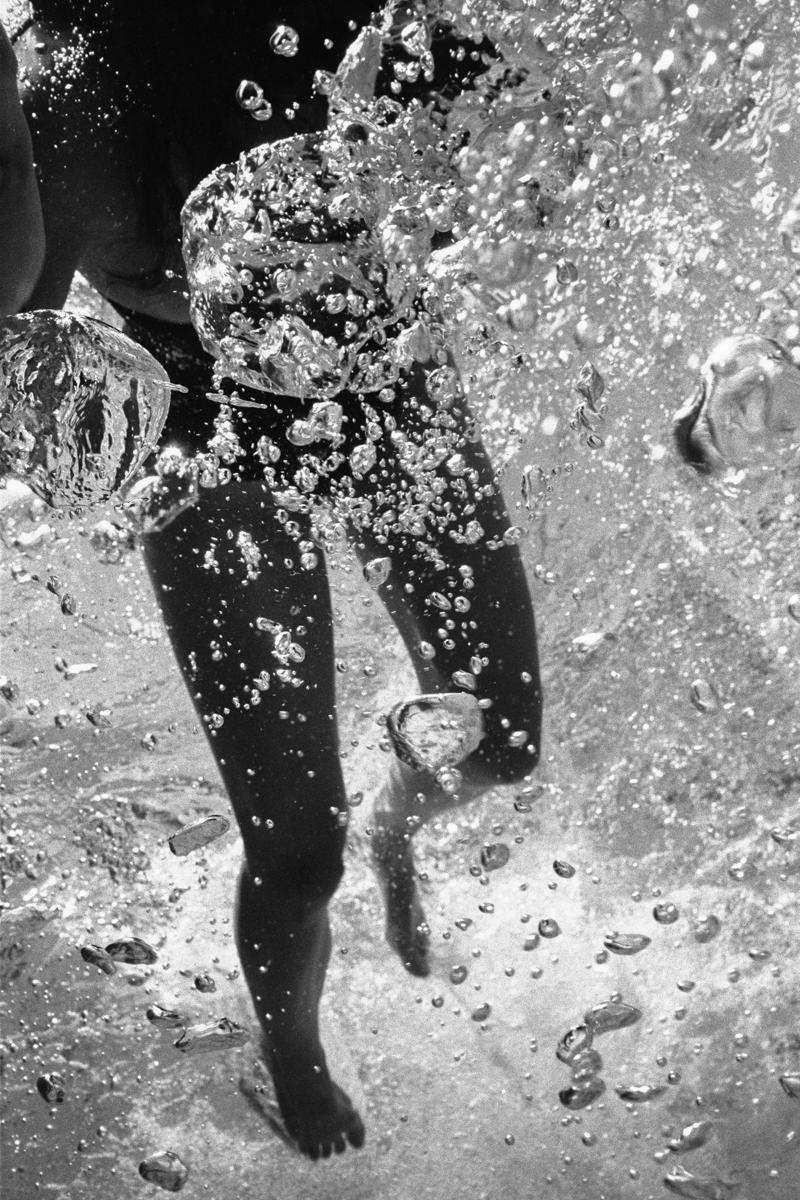
31
Exhale, 2021 Silver gelatin print 56 x 23 in.
Cavitation, 2022 Silver gelatin print 56 x 42 in.
Swimmer, 2022 Silver gelatin print 56 x 42 in.
Nahyun Kim
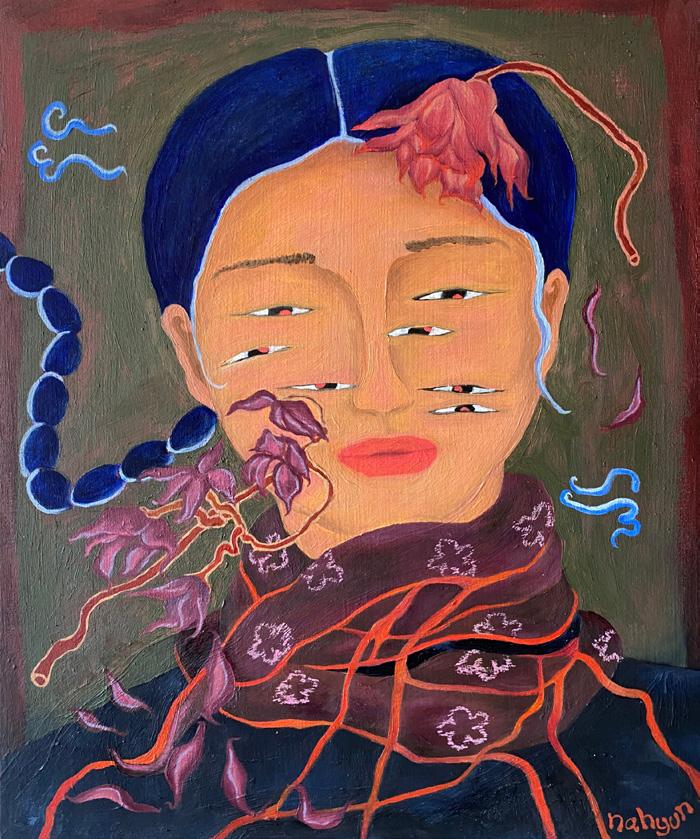
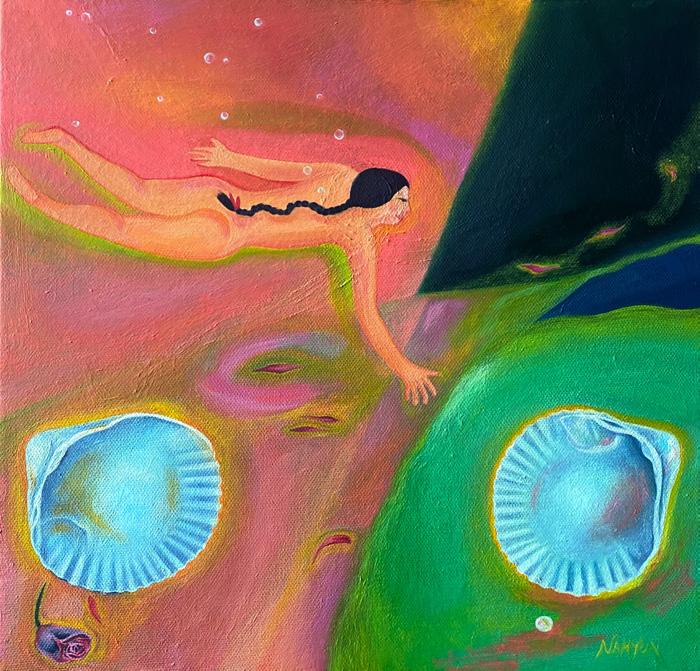

32
She Cannot Be Contained, 2023 Oil on canvas 14 x 11 x 1 in.
Two Shells, 2023 Oil on canvas 12 x 12 x 1 in.
Rooted, 2023 Oil on wood panel 12 x 10 x 2 in.
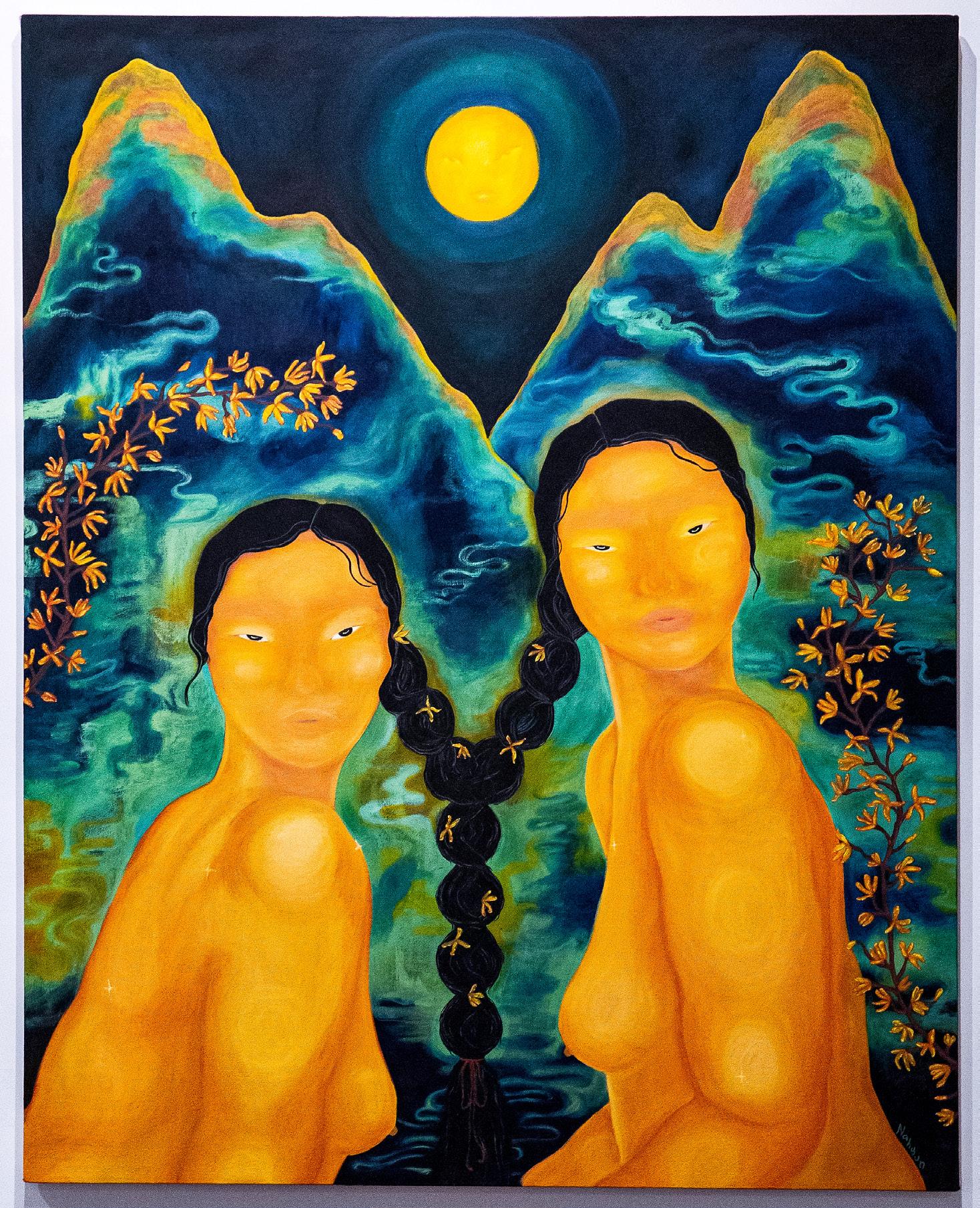
33
On the Mountainside, 2023
Oil on canvas 40 x 32 x 1 in.
Manifest, 2023
Canvas, gold leaf, dried marigold flowers, sharpie, rice paper
Patience, 2023
Canvas, dried rose petals, gold leaf, rice paper, thread 36 x 36 x

Summer. After Zarina, 2023
Canvas, gold leaf, thread 36 x 36 in.
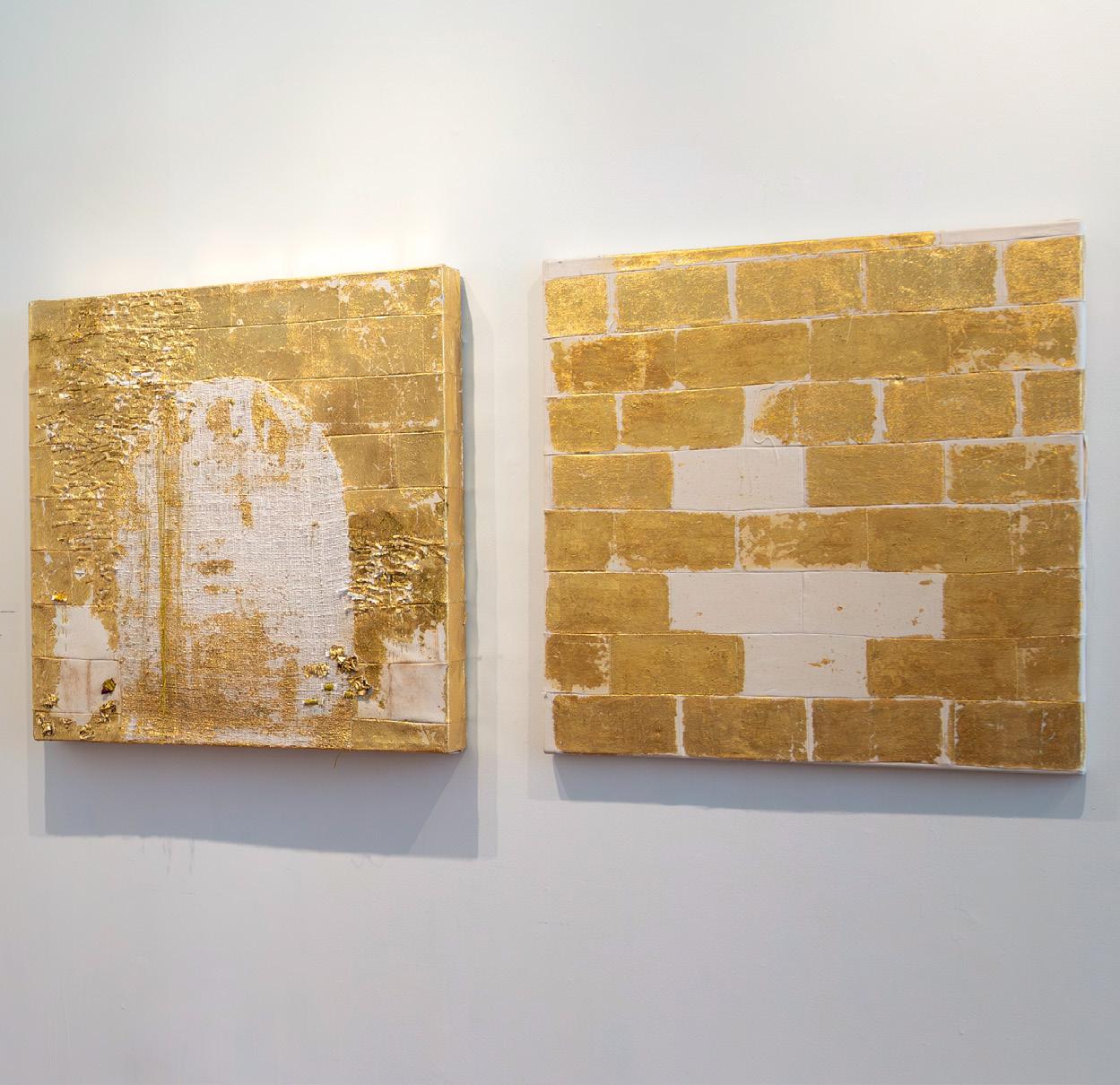
34
61 x 41 in.
4 in.
Namita Paul
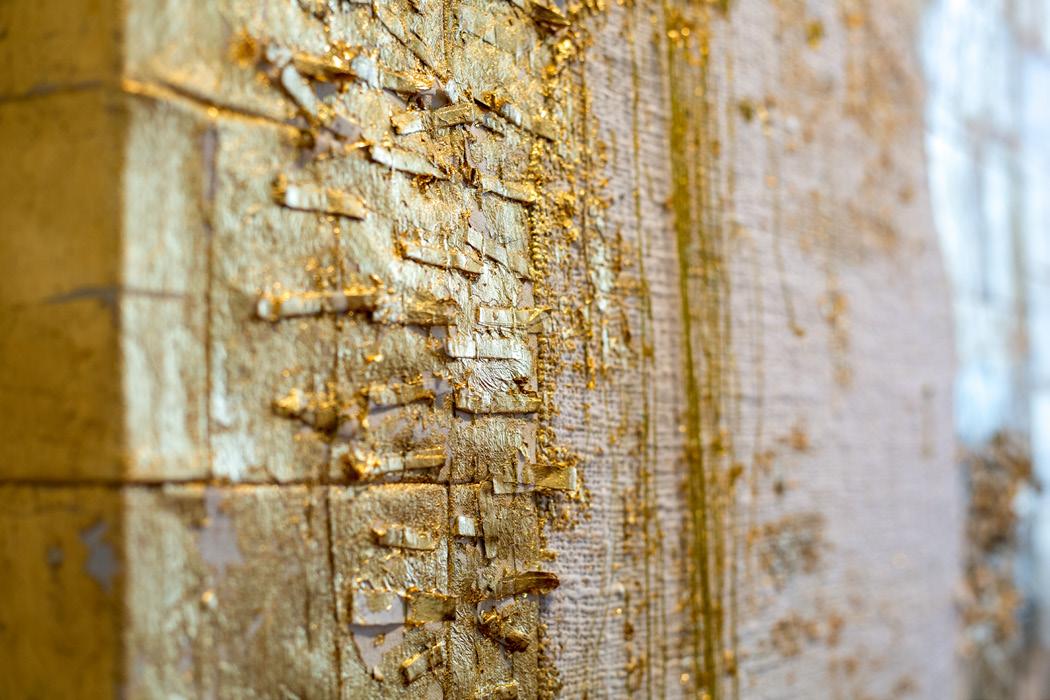
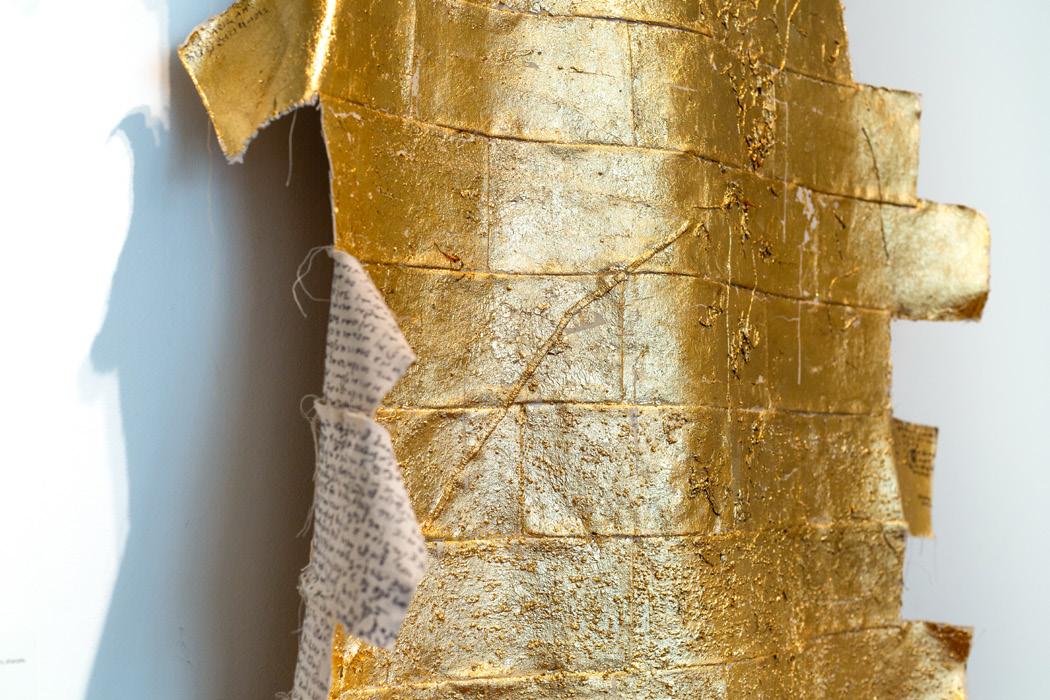
35
Callan Porter-Romero
It was a blue sky somewhere else, 2020
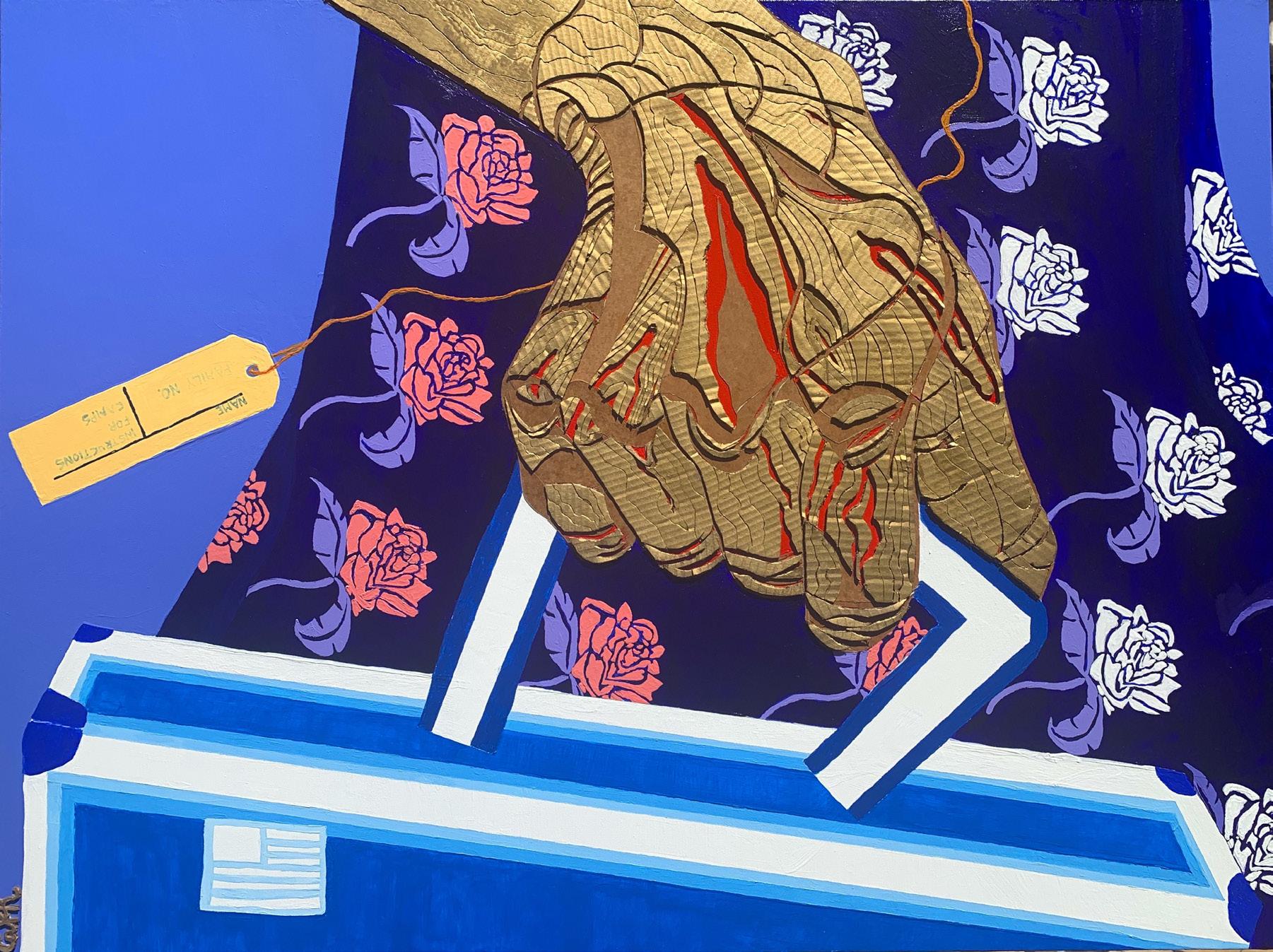
36
Carved cardboard, oil paper, and acrylic paint on canvas
36 x 48 x 1 in.

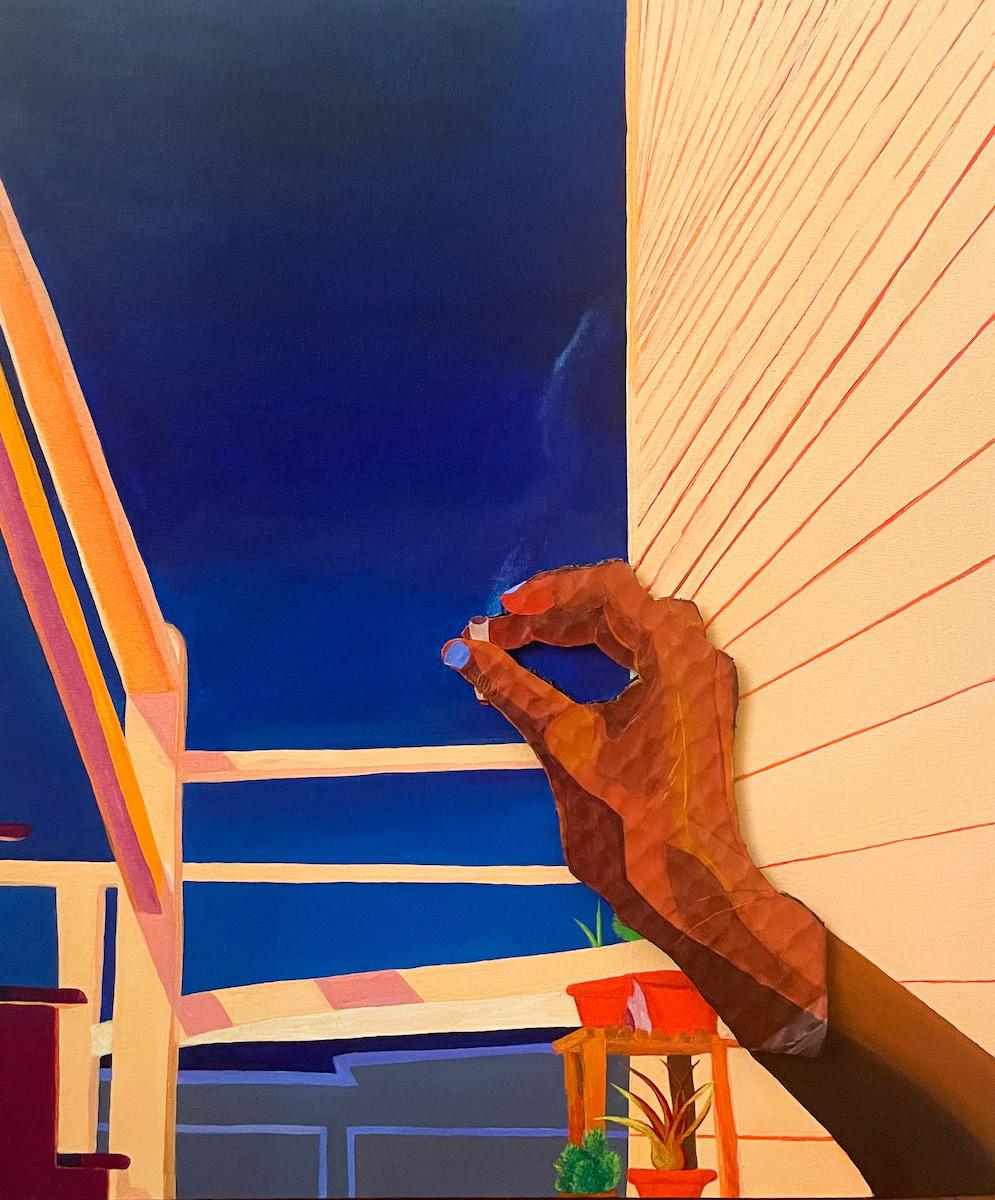
37
Reprieve in the face of return, 2022 Hand-carved cardboard and acrylic on canvas on wood panel 30 x 20 x 2 in.
The glove, 2022 Acrylic paint on canvas 20 x 16 x 1 in.
Yunfei Ren


38
Women’s Work, 2021 Inkjet print on archival paper 24 x 36 in.
On This Earth, 2021 Inkjet print on archival paper 24 x 36 in.
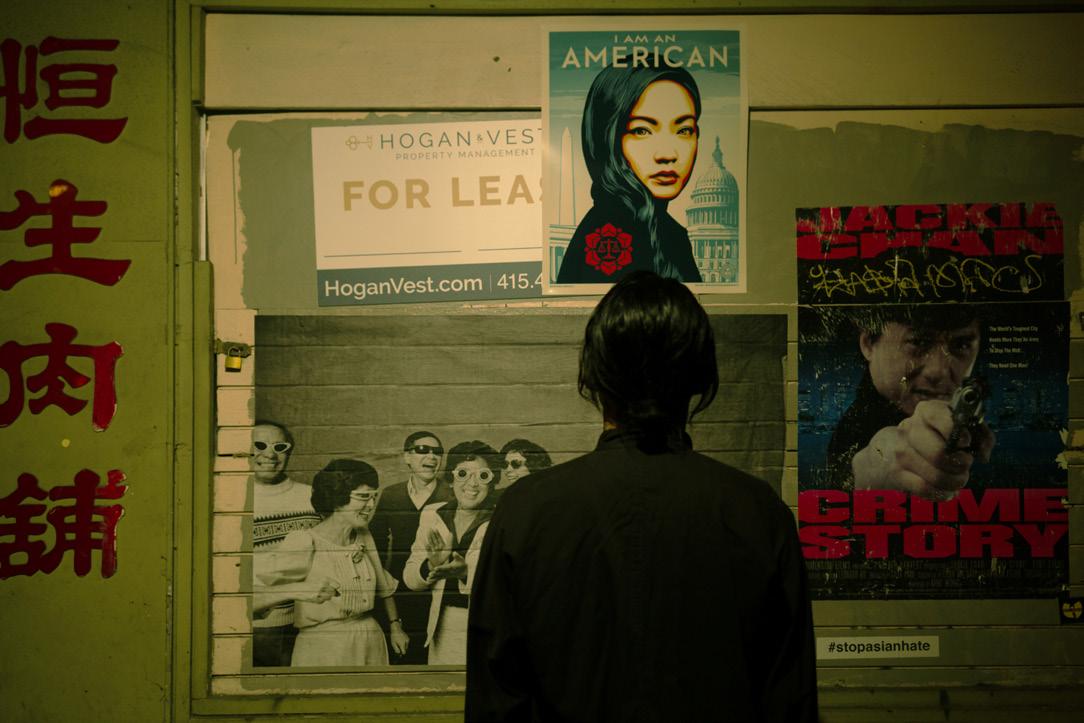
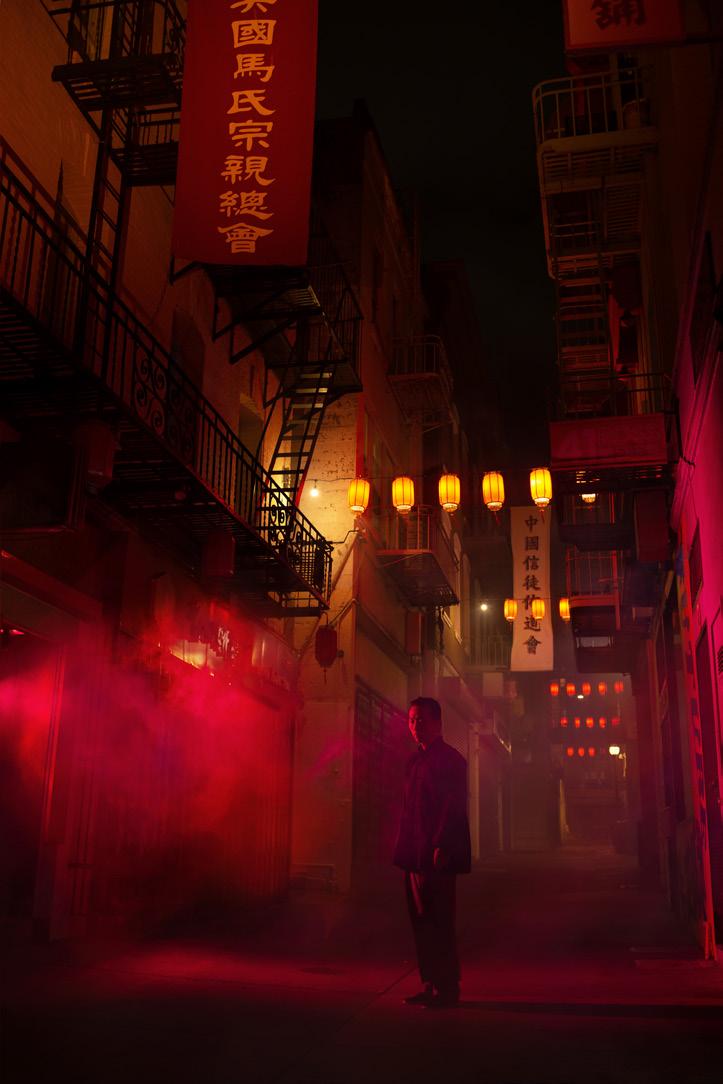
39
Wall, 2021 Inkjet print on archival paper 24 x 36 in.
Home, 2021 Inkjet print on archival paper 36 x 24 in.
STAFF
Frances Fleetwood
Art Programs Manager

Tianna Bracey
Communications & Development Manager
Tamara Berdichevsky-Ovseiovich
Education Programs Manager
Michelle Mansour
Executive Director
Rachel Welles
Managing Director
Helena Gonzalez Martinez
Operations Coordinator
CATALOG PRODUCTION
Michael Nguyen
Catalog Design
Minoosh Zomorodinia
Exhibition Documentation
40
ABOUT ROOT DIVISION





Root Division is a visual arts non-profit in San Francisco that connects creativity and community through a dynamic ecosystem of arts education, exhibitions, and studios. Root Division’s mission is to empower artists, foster community service, inspire youth, and enrich the Bay Area through engagement in the visual arts. The organization is a launching pad for artists, a steppingstone for educators and students, and a bridge for the general public to become involved in the arts.




SUPPORTERS
Root Division is supported in part by a plethora of individual donors and grants from The Andy Warhol Foundation for the Visual Arts, National Endowment for the Arts, Grants for the Arts, California Arts Council, California Humanities, Phyllis C. Wattis Foundation, Kimball Foundation, Redtail Fund of the Oregon Community Foundation, Foundation for Quality Housing Opportunities, Violet World Foundation, Deutsche Bank, and Bill Graham Memorial Fund.

41
Installation view
DONATE
Root Division is a visual arts non-profit, and we are grateful for your charitable support of our programming: rootdivision.org/giving
SHOP ART
Brighten up your home and support Root Division artists while you’re at it!
https://root-division.square.site
BUY IN PRINT
Prefer to have a printed copy of this publication? Order from our store to have it shipped to you.
https://root-division.square.site
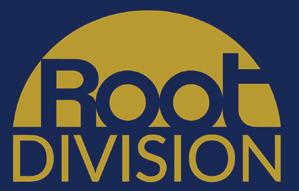
1131 Mission Street, San Francisco, CA 94103 415.863.7668 | rootdivision.org





















































